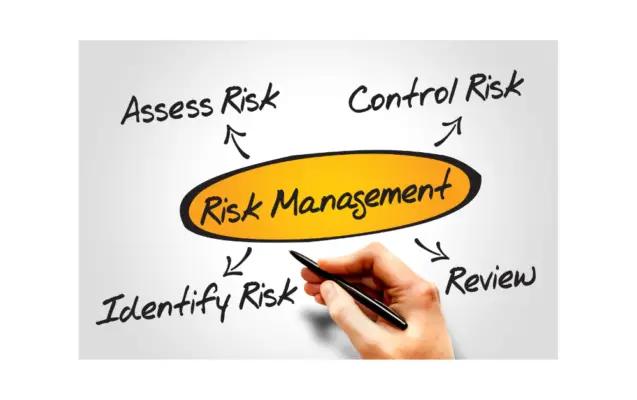A risk premium is an expected return on an investment that compensates the investor for taking on additional risk. A risk premium may be referred to as a security premium or simply a premium. The size of the risk premium will vary depending on the level of risk involved. For example, investors often demand a higher return from stocks than bonds because stocks are typically considered riskier. In general, the higher the level of risk, the higher the required return (and vice versa). Several factors can affect the size of a risk premium, including:
* The investor’s individual risk tolerance
* The overall level of market risk (i.e., how risky investments are in general)
* The availability of alternative investments with different levels of risk
* The time frame of the investment (i.e., longer-term investments typically involve less risk than shorter-term investments)
Paying attention to risk premiums can help investors make better-informed investment decisions. By understanding how much extra return is required for taking on additional risk, investors can choose investments that offer the potential for acceptable returns given their individual risk tolerances.
The risk premium according to investopedia is the higher returns expected from riskier assets such as stocks rather than investing with riskier assets. The investment of assets is always based on their performance and potential losses.
Share prices can decline for a variety of reasons. While it is possible to say that no asset is completely unaffected by risk, experts believe that US government bonds are virtually risk-free investments.
The decision on whether to invest in any investment will often depend mostly on whether the investment will provide enough return to compensate for the risk of assuming the risk. Financially, the surplus returns are termed risk premiums.
A risk premium is an amount of money paid in addition to the regular price of a security or investment. The purpose of this extra payment is to compensate the investor for the additional risk that is assumed as part of the investment.
Many factors can contribute to the risk associated with a particular security, so it can be difficult to determine what constitutes a fair risk premium. However, by understanding how premiums are calculated, investors can make more informed decisions about where to put their money. Let’s take a closer look at what a risk premium is and how it’s used in the world of finance.

How does risk premium work?
A risk premium is a return on an investment minus the market return. To rationalize this concept, one must first understand that there are basically two types of investments: those with high risk and those with low risk.
A high-risk investment has a higher probability of producing a loss. On the other hand, a low-risk investment is defined as an investment with a lower probability of experiencing a loss.
The market return is simply the average return on all investments. The risk premium reflects an investor’s additional return for taking on additional risk. In other words, it represents the price of risk. An investor will only invest in a high-risk investment if he or she feels that the expected return is greater than the market return plus the risk premium.
Put simply; the risk premium is what an investor demands in order to be compensated for taking on additional investment risk. It should be noted that the size of the risk premium will vary depending on the level of risk involved.
For example, an investor considering investing in a risky investment like a new technology company will likely demand a much larger risk premium than an investor considering investing in a well-established company.
This makes sense because there is a much greater chance that the new technology company will fail than the well-established company. As such, investors expect and require a greater return in order to compensate them for taking on the additional risk. While the concept of a risk premium may seem relatively straightforward, it can become quite complex in practice.
This is because many factors need to be considered when determining the size of the risk premium. These include things that can provide greater risk to riskier investments, i.e., historical returns, volatility, correlation, etc. As such, it is important to seek professional guidance when making investment decisions. Doing so will ensure that you are appropriately compensated for taking on additional risk.
Invest risk premiums in your investment portfolio to provide risk protection. An employee who does risky work should be compensated in exchange for the risk incurred in his/her role. Similar to risky investing. Risky investments should offer greater returns to investors and compensation if a person loses some or all of their money.
These compensations take the place of risk premiums, representing the extra return on what investors can expect recklessly through investments. The premium rewards investors in a failed business for their potential to make a little less money if their company is not successful.
Risk Premium Formula
The risk premium is simple: It subtracts the anticipated return for an asset from the risk-free rate – which is just the current interest rate paid by riskless investments such as government bonds. Returns to the asset at risk of 2% = Risk premiums. Using a capital asset pricing model is important in calculating the risks of portfolio investment.
Let’s say that the risk-free rate is 2% and that the treasury bill provides risk-free returns of 2% annually. If a public company’s stock delivered an annual return of 10%, it would have to have an 8% premium.
The risk premium is an important concept in finance and investing, as it calculates the required rate of return for an investment. It represents the minimum return that an investor must receive for taking on additional risk. The higher the risk premium, the higher the required rate of return.
The risk premium can be calculated using the capital asset pricing model, which considers an investment’s risk and the expected return. The model is used to determine the optimal portfolio allocation for an investor.
The risk premium is also used in calculating the weighted average cost of capital, which is the minimum return a company must earn on its investment to satisfy its lenders.Risk premium can be seen in the market risk premium and the equity risk premium.

Equity risk premium
The equity premium is the excess return on a portfolio of stocks above the risk of a particular stock. A high-risk company will need a higher equity risk premium for investors to attract investors. Our example above calculates the equity risk premium using their annual returns.
Equity premiums have always been aimed at companies with higher earnings. We must determine how long the future return of stocks will last. We can calculate future returns by looking backward and based on historical returns.
Market Risk Premium
Going a step further, the market risk premium is an investment requirement that ensures investors have an excess return on holding an indexed market portfolio rather than risk-free assets of higher risk.
Like the equity risk premiums, the market risk premiums can also be considered an analytical tool for analyzing future developments and assessing risk. Instead of analyzing individual companies’ stock historical performance, we use historical data on a benchmark stock index to estimate the market returns and increased risk.

Conclusion
A risk premium is a price investors demand to take on additional risks on a given investment. The purpose of a risk premium is to compensate investors for the potential losses they may experience due to holding risky assets and expected returns.
In order to calculate the risk premium, you need to know an asset’s expected return and standard deviation. Understanding how a risk premium works can make more informed investment decisions and protect your portfolio from unnecessary risks. Have you ever had to pay a risk premium?

Chris Ekai is a Risk Management expert with over 10 years of experience in the field. He has a Master’s(MSc) degree in Risk Management from University of Portsmouth and is a CPA and Finance professional. He currently works as a Content Manager at Risk Publishing, writing about Enterprise Risk Management, Business Continuity Management and Project Management.

